As backcountry anglers, we stumble upon some pretty impressive wild creatures while we fish. For me, seeing bears in the Alaskan rainforest, gators in the swamp or sharks while wading the flats is almost as much fun as actually fishing.
But it can be a bit unnerving, particularly when you’re not expecting the encounter. Thankfully, I’ve never had to use the can of bear spray that I generally keep tucked into my wading belt when I’m wandering the northern Rockies or other fishy locales where members of the Ursus genus tend to show up on occasion. But I have had my heart leap into my throat a few times thanks to encounters that neither I nor the bear were expecting—these are the most dangerous encounters, of course.
Gators are definitely best observed from the boat, as are crocs in more tropical climes. But, on a recent flats trip to far southern Mexico, I unknowing shared a coral head with a croc big enough to ruin my day—my fishing buddy, wading behind me, showed me a photo of the five-foot reptile hiding in the coral that, moments before, served as my casting platform.
Unnerving doesn’t begin to describe it.
But it is perhaps the tropics’ least-threatening giant creature that has unleashed the most terror upon my soul. And it’s done it twice.
More Like This
The manatee is strictly vegan. Tourists in Florida delight at the sight of these 12-foot-long gentle-giant mammals gobbling up heads of iceberg lettuce in estuarial rivers, particularly in the winter, when cold fronts push these marine animals into the shallower, warmer waters where they can be seen more frequently.
The West Indies manatee—my creature of damn near every black lagoon on which I’ve paddled a kayak—is the critter native to Florida and the Caribbean tropics, stretching south to the northern reaches of South America. Here in the United States, the “sea cow” is enjoying a comeback, thanks largely to simple conservation efforts undertaken to protect it, but it’s still quite rare, and, frankly, imperiled, thanks the water distribution system that artificially drains Lake Okeechobee’s tainted overflows into both the Atlantic and the Gulf of Mexico.
Farther south, it’s understandably more populous thanks to a smaller human footprint.
My first encounter was easily the most terrifying. It was just after sunrise, and I was paddling a borrowed kayak between Matlache, Fla., and the mangrove swamps that separate Fort Myers from Pine Island when a bulbous snout surfaced just off my starboard paddle, not three feet from the lime-green boat. I’m quite the certain the high-pitched, terrified shriek I let out woke everyone up from Matlache to Coral Harbor, and likely convinced this harmless ocean mammal that the person in the kayak was easily the largest woman it had ever seen.
It took a few moments, but when I realized it wasn’t one of the bull sharks the locals had warned me were frequenting the lagoons, or a 12-foot alligator out to spill me in the dark water and death-roll me to the bottom, I reveled in the good fortune of the encounter. I had never seen a manatee, and this up-close-and-personal bump with the rare mammal made my day (the fishing consisted of a couple of gnarly sailfin catfish and a missed strike for a snook).
A couple years later, while fishing the beach off of Sanibel Island, another manatee decided to frighten the bejeezus out of me. I was casting to Spanish mackeral, ladyfish and hoping for a shot at a beach-hugging snook or two when, in the cloudy green water between the tip of my fly rod and where the line actually hit the waves, a young manatee popped its head out of the salt.
Had I been so inclined, I could have reached out to touch the animal, but I was too busy screaming in terror and falling backwards into the sea to be so clever.
They’re curious by nature. Obviously. And if you’re not expecting one—they’re not very good at announcing their presence until they decide to stick their nose and eyes out of the water to say hello—it can be downright petrifying.
On a recent trip to Chetumal Bay, our fly fishing guide for the day, Nato, delighted in showing a couple of tourists from Idaho, the manatees that frequent the mangrove creeks and rivers that make the border between Mexico and Belize. He slowed his panga to a crawl and, as we got to what I assume Nato knows to be the spot for the giant marine mammals, he cut the motor.
Moments later, the largest ocean creature I had ever seen, outside of an actual humpback whale in Alaska, slowly rose from the depths and poked its nose above the surface. After a day spent chasing bonefish to the point of exhaustion, we perked up (honestly, I don’t think we actually expected to see a manatee, but we liked the idea, so we played along with Nato). Its mottled gray back came more and more into focus as it got closer to the surface. When its nose popped above the water for a quick breath, we both delighted with appreciative “oohs” and “awwws.”
It was the first time I’d seen a manatee that hadn’t put the fear of God into my soul, and it was the first time I actually got the chance to appreciate just how big and how impressive these animals really are. At this size, their only legitimate threat is man—even a 15-foot croc would struggle to kill an animal this big and this powerful, even if it looks as if it wouldn’t hurt a flea.
Encounters like this are why I fly fish, honestly. They’re why I search out far-flung places (or even never-before-visited creeks and blue lines on the gazetteer near home) to cast a line. Like a lot of passionate anglers, fly fishing is my soul’s lithium battery, but I’ve come to realize that it’s also my response to my innate curiosity.
Yeah, we got some bonefish and some snappers and jacks, and a couple of barracudas. But when we tell the stories of our adventure, they’ll begin with, “That idiot Chris stepped right over a hole in the coral where a crocodile was hiding,” or, “I’ve never seen something quite as impressive as that manatee back in those mangroves.”
We heeded the warnings from friends who were unnerved at the prospects of visiting Mexico—the drug wars in resort communities have claimed a few tourist casualties of late. I listened intently at the cautionary tales that come with driving in rural Mexico, far from city services, cell signals and wifi, and of tales of kidnappings and beheadings and the like.
These realities are likely more dangerous than sharing a flat with crocs and sharks and such, but as we watched this giant animal moving effortlessly and lazily through the water, those warnings were forgotten, shoved aside in favor of the realities at hand.
These are the moments that make fly fishing more than just fly fishing. These are the moments that create adventures and memories and stories our grandkids might one day hear and spur inspiration.
That’s why I fly fish, I think. Not for the fish so much. But for the stories.
For the adventure.







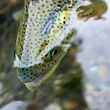



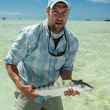



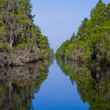




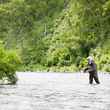
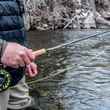



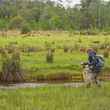
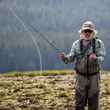

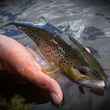

Comments
Ed Robinson replied on Permalink
It's Matalacha, FL. With an a.
Rob replied on Permalink
Amateur. Complete garbage. Standing on coral? Watching tourists feed iceberg lettuce to dugong? Manatee are rare? Simple conservation efforts brought them back? Crocodike around Pine Island and Sanibel? Alligators and Bulll Sharks in mangrove "swamps"? Mangrove swamps?
Hatch magazine spammed me so much I actually read a few articles out of intetest. This was the second. Amateur hour open mic at a soon to be defunct coffee house.
Sounds like this guy had a couple of vacations that resulted in him being the expert on manatee. Don't worry about fact checking or writing a coherent, intelligent story. This is a fine example of why you have to spam people to read your "magazine." They would not pay for it or pay attention to it otherwise. Nice work Chris.
Pages